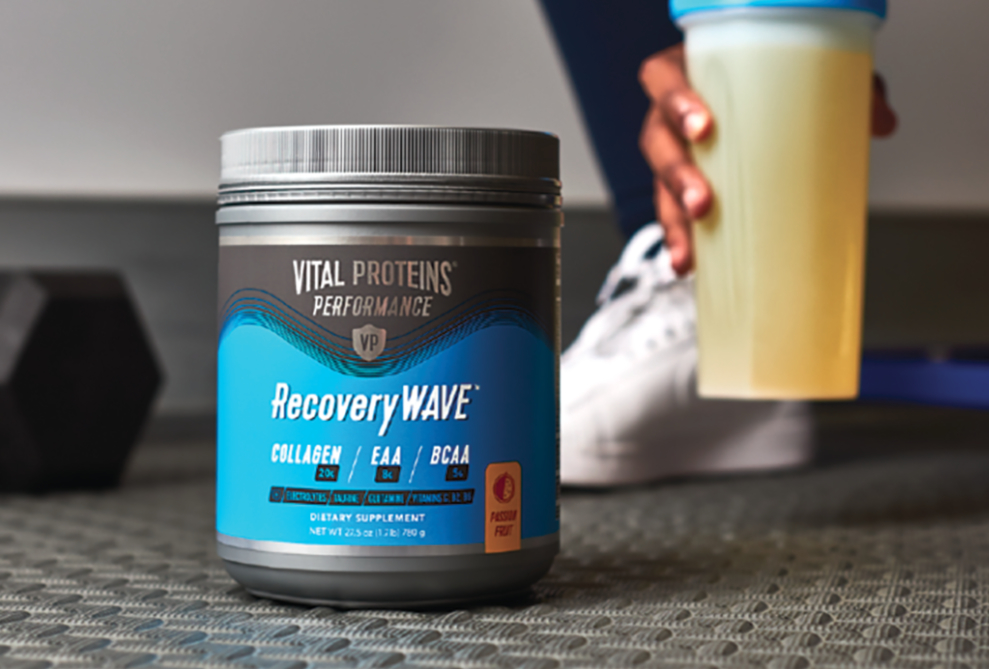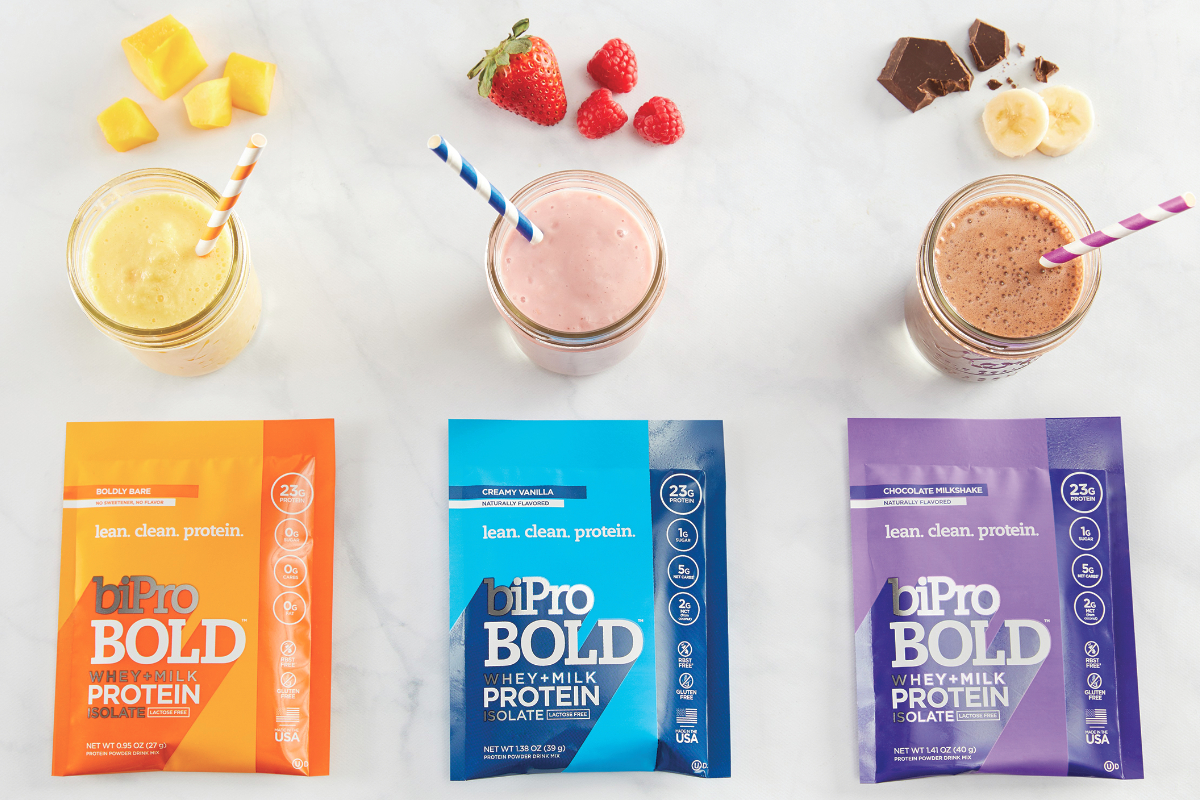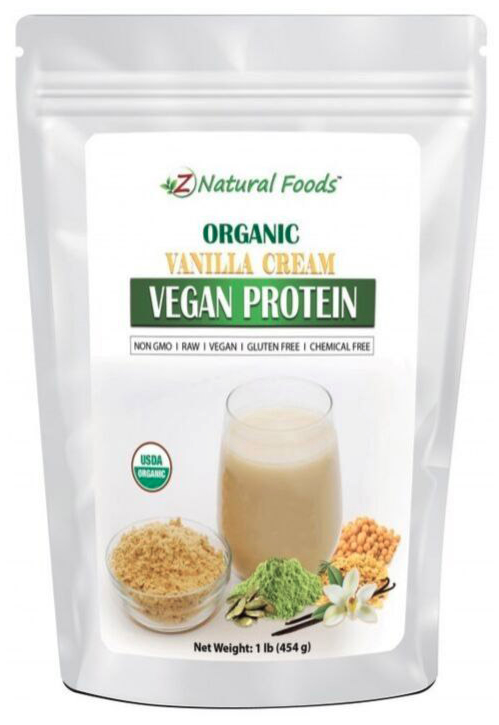KANSAS CITY — Kool-Aid, Ovaltine and Tang are some of the earliest forms of powdered drink mixes. More recently, the category has evolved from a “cheap and quick” way to get flavor into water or milk, to a value-added premium segment.
“Around the globe, beverage manufacturers are being challenged by both consumers and regulatory bodies to reduce the use of plastic single-use bottles,” said David Rigg, marketing director — global food colors, Sensient Food Colors, St. Louis. “Dry beverage brands have an opportunity to position themselves as more sustainable than their ready-to-drink competitors. In addition to sustainability, functionality is often better delivered in mix form. With growing interest in both protein beverage mixes and more elaborate sport drink formulations, dry mixes may see a resurgence in popularity.”
Antje Collman, food scientist, Wixon, St. Francis, Wis., added, “Dry mix beverages are cost effective and convenient for consumers with less packaging. Also, it cuts transportation costs because you’re not shipping water.”
Formulation challenges
There are many ingredient considerations when formulating dry drink mixes, as it is critical that the mix quickly dissolve, not be gritty or have sediment, and look and taste appealing. It must do all of these things while having a lengthy ambient shelf life, with most products expected to be acceptable for at least a year.
“One challenge is to formulate a mix with components that have similar granularity or particle size,” said Jody Renner-Nantz, applications manager, DDW, The Color House, Louisville, Ky., which markets a natural color powder line that is acid stable and provides clarity in hydrated drink mixes. “This is important in a filling operation since it’s essential to deliver a homogeneous dose into a sachet or other package for uniform color, flavor and ingredient delivery.”
Non-homogenous systems may experience issues over time.
“Common issues include clumping of sugar and separation or stratification,” Ms. Collman sand. “Finding the right balance of weighting agents and anti-caking is key.”
Hydration rate must also be considered. It is important the mix dissolve quickly and uniformly. This is often dependent on particle size.
 Sweetener solids and bulking agents make up the particles in most drink mixes, other than in protein drinks. Here protein particles dominate the mix. In both scenarios, particle size matters.
Sweetener solids and bulking agents make up the particles in most drink mixes, other than in protein drinks. Here protein particles dominate the mix. In both scenarios, particle size matters.
“Sucrose is the typical sweetener used in beverage dry mixes and considered to be the gold standard,” said Robert Wansor, principal technologist-global applications, Ingredion Inc., Westchester, Ill. “Sucrose not only provides sweet taste, but also imparts mouthfeel.”
When high-intensity sweeteners are used to reduce sugar and calories, it is important to add solids to build back mouthfeel. Dextrose, maltodextrin and corn syrup solids are some of the most popular bulking agents in the industry, Mr. Wansor said.
“Natural high-potency sweeteners are often paired with erythritol to develop zero-calorie beverages with optimal taste performance,” he said. “Erythritol is a great sweetener and bulking agent that is non-hygroscopic. Because of this, it has great flowability and maintains a long shelf life.”
Fiber ingredients may be used in dry mixes to add bulk. Some also contribute sweetness, all while boosting fiber content.
“Dry beverage mixes can serve as vehicles for fiber fortification,” Mr. Cavallini said. “Chicory root fiber, with its neutral flavor, makes it easy to boost the fiber content of most any powdered beverage. Unlike many fiber choices, it won’t add viscosity when mixed with water.”
Moisture protection is important, especially in multi-serve containers, as it is important the powder not absorb moisture and cake or harden. This is not an issue with properly packaged individual sachets.
“Managing oxidation of colors, flavors and other ingredients in the dry beverage mix is also an important consideration,” Ms. Renner-Nantz said. “It can be controlled by the addition of antioxidants that slow the process and by the use of laminate packaging films that limit oxygen migration into packaging.”
Color considerations
Because we drink with our eyes first, color is a key consideration. Variations in hue must be considered with mixes that may be dissolved into different bases, such as water, milk, nut beverages, etc. Because mixes are expected to have a long shelf life, colors must be able to withstand the test of time.
Sensient Food Colors has a proprietary technology that allows for plating-grade natural colors derived from oil- and water-soluble sources. This allows for long shelf life, cleaner label dry mixes, as they no longer must rely on synthetic colors for stability, or oil-soluble natural colors, which are prone to oxidative breakdown.
 “With these colors as part of our toolkit, we are able to achieve a full rainbow of shades, including blends to match the most specific hues,” said Alexandra Sirosky, technical service manager-beverage and dairy, for Sensient. “This technology also increases uniformity in color throughout beverage dry mixes and improved stability to oxidation. Organic options are available.”
“With these colors as part of our toolkit, we are able to achieve a full rainbow of shades, including blends to match the most specific hues,” said Alexandra Sirosky, technical service manager-beverage and dairy, for Sensient. “This technology also increases uniformity in color throughout beverage dry mixes and improved stability to oxidation. Organic options are available.”
There are several natural colors not approved for R.-T.-D. beverages but are allowed in dry mixes. Blue from spirulina extract is one example.
“When combined with a natural anthocyanin red, you have purple,” Ms. Renner-Nantz said. “Combine the spirulina with beta carotene or turmeric, and you can have green.”
Flavor and functionality
Flavors also may be a challenge in dry mixes because the heat of spray drying causes volatile components to be lost during processing.
“This means compounds such as fruit esters will be lost during processing, causing a shift in the overall flavor profile,” said Joshua Jackson, beverage applications technologist, Sensient Flavors, Hoffman Estates, Ill. “Altering the spray dry processing parameters is one way to help reduce the amount of volatiles lost.”
In addition to offering a range of spray dried flavors for dry mix beverages, Sensient Flavors has a library of spray dried masking technologies to cover off notes.
“Some examples include masking the off notes in powdered protein beverages or sweetness that lingers from high-intensity sweeteners,” Mr. Jackson said.
CoreFX Ingredients, Chicago, uses proprietary technology to turn fats and oils into stable powders for use in beverage mixes. This has become increasingly trendy with keto beverage systems, as well as meal replacements and other functional beverages. The encapsulation technology minimizes off odors and tastes from the fats. This is critical when working with sensitive oils such as those derived from fish, algae, cannabis and some other plant-based omega oils.
 “Given the rise in popularity of fats and oils for both body and brain metabolism and related positive effects in weight management, the advancements in extracting a much broader range of oils from plants and fruits and then drying high oil loads into powders has increased the spectrum of fatty acids available to the consumer,” said Denis Neville, chief executive officer.
“Given the rise in popularity of fats and oils for both body and brain metabolism and related positive effects in weight management, the advancements in extracting a much broader range of oils from plants and fruits and then drying high oil loads into powders has increased the spectrum of fatty acids available to the consumer,” said Denis Neville, chief executive officer.
The emulsion technology also allows for delivery of multiple functional nutrients, such as fiber and protein. Beverage mixes often include many types of these nutrients in order to deliver large amounts to the consumer. Emulsion technology enables a single mix to contain many types of proteins, everything from dairy to egg to collagen to plant.
“Protein drink powders have long been a big part of the dry beverage mix space, and their popularity continues today,” said Vince Cavallini, beverage, dairy and convenience food application manager, Cargill, Minneapolis. “While soy and whey protein still have a place in this space, increasingly, consumers are embracing products made with some of the newer plant proteins. Many of these options come with inherent flavor challenges.”
Plant proteins for beverages must be chosen wisely. The plant protein varietal and how it is processed all impacts taste, Mr. Cavallini said.
Protein powders tend to be quite challenging in terms of dispersibility, as they will lump together, making them hard to stir in. That is why many protein beverage mixes suggest shaking the beverage.
“Dispersibility challenges are often solved by instantizing the protein powder with soy or sunflower lecithin or instantizing the entire beverage mix so that dispersibility is nearly instant or easily dispersed using a shaker bottle,” said Rosa Sanchez, group manager-beverage innovation, DuPont Nutrition & Biosciences, St. Louis. “The downside is that the instantizing process adds cost to the final beverage mix.”
The more varied types of ingredients in the mix, the greater the challenges. This includes delivering a desirable mouthfeel and texture.
“When it comes to formulating instant protein beverages, an enormous challenge can be the gritty texture that often stems from insoluble proteins, vitamin and mineral blends, and other functional ingredients,” said Marshall Weston, food scientist, TIC Gums, White Marsh, Md., a business unit of Ingredion. “A chalky texture from these ingredients can be unpleasant and is oftentimes one of the main customer complaints in an instant protein beverage.”
“Formulators must also consider other textural attributes, such as upfront and end viscosity, slipperiness and mouth clearing,” she said. “Xanthan gum is the gold standard in instant protein beverages for suspension of particulates, as it is cold-water soluble and rapidly hydrating. However, to get the suspension needed with xanthan gum alone, the texture is oftentimes unpleasant. Ingredients like guar and acacia help to increase the viscosity of the beverage and achieve ideal mouthfeel.”
Executives with Nellson L.L.C., Anaheim, Calif., a manufacturer of branded and private label functional powder solutions, believe drink mixes will gain in popularity as consumers seek out more customized, convenient and affordable nutrition solutions.
“Interest in sustained energy from ingredients that are perceived as natural is driving powder beverage formulations,” said Steve Curtis, research and development manager-powder. “Gaining popularity in this space are adaptogens, which claim to increase energy by reducing stress and balancing mood.
“Working with these ingredients can result in a variety of formulation challenges, including taste. Masking agents and flavor systems are a common solution for bitterness. Another option is pairing inherent off-notes with complementary flavors.”
A bitter functional ingredient, for example, may be paired with a citrus flavor like lime. It has slight bitter notes that round out the flavor.
A variation to the dry mix sachets and multi-serve containers is a bottle cap delivery system. Here the cap contains the dry mix and with a simple turn, the mix pours into the bottle of liquid, shaken and consumed.
“This allows for sensitive ingredients that may not typically be possible in a R.-T.-D. beverage to be available on-the-shelf rather than in a separate stick pack or in an R.-T.-D. that’s refrigerated and has a shorter shelf life,” Ms. Sanchez said. “Freeze-dried probiotic powders are one such an example. They have good stability over shelf life when used in a low-water activity powder blend with excellent dispersibility.”
The future is bright for innovation in the dry beverage mix space.
“Dry mixes have their place for a number of reasons,” Mr. Jackson said. “Beverage mixes have long shelf lives, making them great to have on hand and are easy to store. They also tend to be more cost effective and take up much less shelf space than their R.-T.-D. counterparts. Dry mixes can often be overlooked as cheap beverages that aren’t as high quality as R.-T.-D., but they often can have very similar profiles.”




